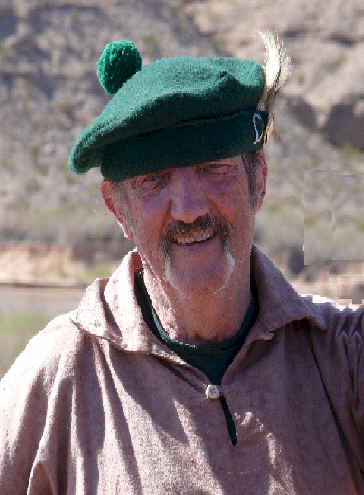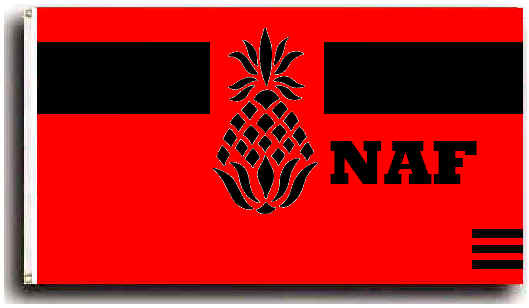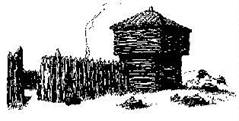|
BLACK
POWDER SHOOTING
PART
1

This
article will deal with target shooting.
First of all, take the
time to do it right. Most target shoots today are done at
short range with maybe one long shot thrown in. This being
the case I will emphasize that large charges are not
needed for short range matches. You want to start out
with 10 grains less powder than the manufacturer’s
recommended charge. For example:
50
Cal. use 40 grains
54
Cal. use 44 grains
36
Cal. use 26 grains (only good out to 30 yds.)
45
Cal. use 35 grains (Seldom go down 10 grains)
36
and 45— it's good to consider lowering the charges for
youngsters and women.
TARGET
SHOOTING
Zero in at 25 yards on
a large cross target—Empty pizza boxes work well. A .50
Cal. should punch a hole 3 inches high with a 40 grain
load. Then move to 50 yards and then to 75 yards. At 75
yards you may have to hold a bit high. If you use an 8 X
10 paper for your target, I have found that
holding at the top of the cross seems to work. If
you have to hold off target, I will always tape a card on
my stock as a reminder. Tuck this in the back of your mind
right now.
The human eye cannot
focus on two objects at the same time. It's impossible.
Stare at your front sight. Your target will be a slight
blur along with your rear sight. Place your finger on the
trigger and hum to yourself as you apply pressure. When
the gun goes off it must be a total surprise.
Lately I have been
playing around with some of the new powders such as Clear
Shot and Clean Shot and it's recommended to go with the
same charge amounts. The only powder I compared it with is
2 Fg. So read the label and go with the manufactures
recommendation. For now I'll though, I’ll continue
discussing the real F powders.
POWDERS:
32
to 50 cal. use 3 Fg.
50
cal. fast twist and larger use 2 Fg.
11
bore and larger muskets, along with cannons, use 1 Fg.
It
has been written that Pyrodex doesn't work well in
flintlocks. My experience with it showed it to be
inconsistent—sometimes okay—sometimes awful.
I don’t use it.
PATCHES:
I
have tried out various materials for patches and now use
only cotton, dry or lubed, in strips or precut. When I
use pillow ticking I like to go from target to
target with a strip hanging from my mouth. Spit lube then
is the order of the day, especially when speed is
necessary. In cold weather I revert to pre-lubed patches.
My advice is to start out with a .010 thick patch. and
work your way up, through 015, 017, and 020. I like to
start with the smallest ball the gun I’m shooting will
take and the lightest patch and work my way up in patch
thickness.
|
|
ROUND BALLS:
Begin with the
smallest available. I say that because some calibers have
two sizes that will work in the gun, such as when a 40
caliber will take a .390 / .395, a 50 caliber that will
take a. .490 / .495, a 54 caliber that will take a.530 /
535.
POWDER
MEASURE:
Use for safety and
consistency. Never load directly from horn or dispensers.
GENERAL:
Take with you some 4 Fg.
powder with dispenser (for priming pan and dislodging dry
balls.) Flints for flintlocks, caps for percussion, short
starters to assist with stubborn patches and balls. You
really shouldn’t have a need for a short starter unless
your barrel is starting to foul or you have worked your way
up to a thick patch.
I
have a 50 and a 54 caliber that I use for hunting and I
changed the nipples to a # 10 which is a musket cap. This is
nearly double the blast you get from a standard nipple and
cap. This give you an edge, especially in foul weather. I
have even dislodged a dry ball with just the cap. Also when
you get older they are easier for stiff fingers to handle.
TRIGGER
TYPES:
Single
trigger, single set, double set, single acting, double set,
double acting—you will likely run into them all and you
will pick a favorite.
ADDITIONAL
ITEMS:
Cleaning
jag, ball puller, patch worm, vent pick, Knapping tool,
nipple wrench /nipple pick combination, and a main spring
vise along with an extra main spring.
If I'm going to spend
time at the range I have a large wooden box with everything
imaginable to solve any problem. I also have two Co2 ball
blower-outers for use at the range in order to save time.
This will work well with adapters for both flint and
percussion.
PREPARING
TO SHOOT:
Wipe the bore with a
clean dry patch to remove any oil. Be sure and clean the
bottom of the breach. Prior to shooting, condition the
barrels, fill the flash pan, trickle powder through the
flash hole and flash. With a cap lock, snap two or three
caps to clear oil from passages. Another method is to put 10
or 20 grains of powder down the barrel and snap a cap to
clear the breach. In patching, we have 10 - 15 - 17 - 20
thousands patch thicknesses. It should be your goal to
settle on the best patch and ball for each gun. I like to
tie a large colored tag in large print for each gun to each
shooting pouch. It has all the information with what is in
the bag.. I did go out one time with a 50 caliber gun and a
54 caliber bag. Big mistake!
PATCH
LUBE:
My favorite patch lube
other than spit is Vaseline Intensive Care Hand Lotion in
the yellow bottle. Most of the time in the high country and
cold it doesn’t freeze. Remember that patching is very
important. Start out with the smallest ball available and
the right thickness patch. This is like the bottom line. Try
and spend a day at the range and experiment. Make yourself
an all brass ramrod at least 6 inches longer than your
barrel. Thread both ends. I like to use a patch jag on one
end and a brass brush on the other. I will run a cleaning
patch after every five shots. I use a cleaning solution of
1:1:1: Murphy"s Oil Soap, Peroxide and alcohol. Try it
and you’ll discover that this really speeds up cleaning.
In
the next article I'll get into more tips and shooting. In
the meanwhile, go burn some powder!

|
|

